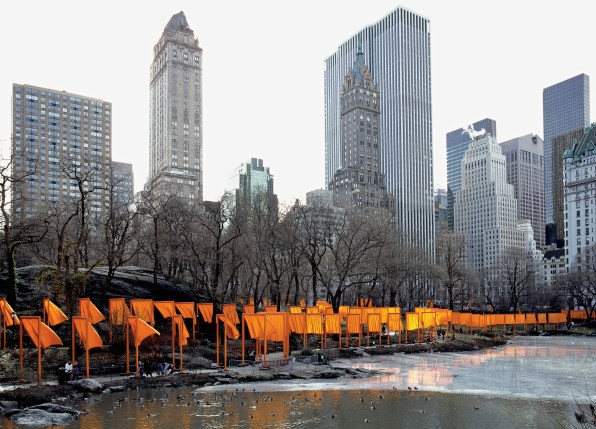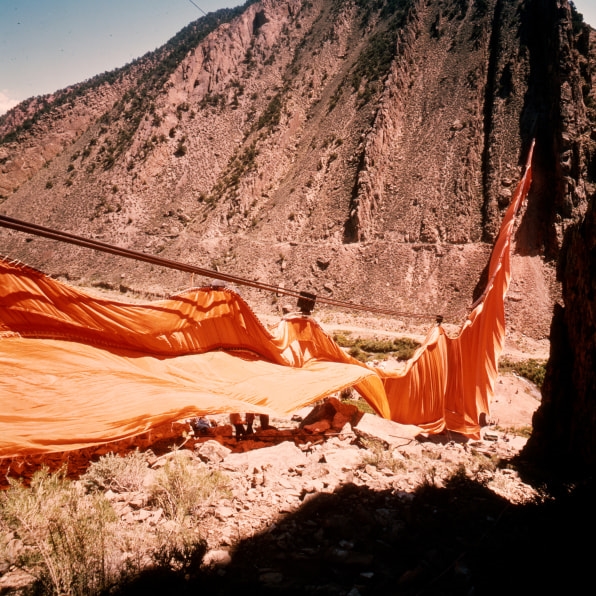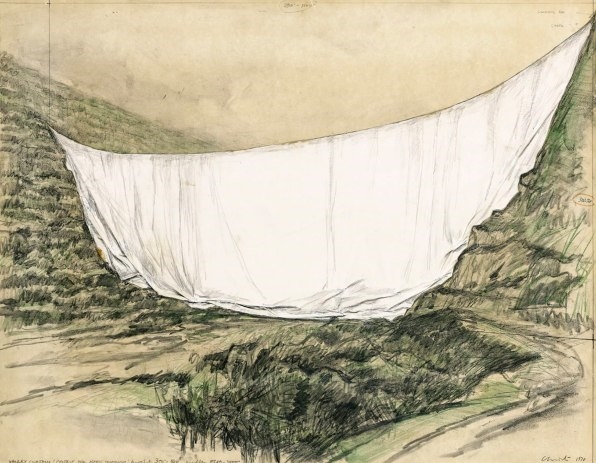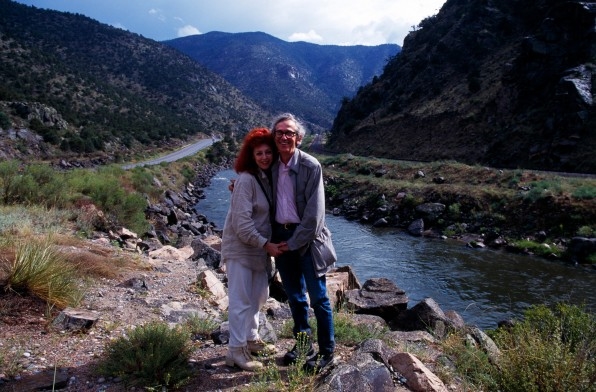An inside look at the process behind Christo’s monumental artworks
From the installation of a 25-mile-long fence in California to the wrapping of the Arc de Triomphe in fabric, the monumental artworks of the late artists Christo and Jeanne-Claude were often years in the making. These projects, often done in public spaces and sensitive natural landscapes, required dozens of governmental approvals and permits that sometimes took decades to achieve. A new exhibition in Aspen offers a rare inside look at the process behind some of the pair’s most famous works, and the unique partnership that made it all possible.
Christo and Jeanne-Claude: Ephemeral Nature opens August 1 at Aspen’s Hexton Gallery, and features some early project drawings and collages that have never been publicly shown.
“[The work] is from their personal collection,” says Bob Chase, owner of Hexton Gallery. “Not only are these works that were important to them personally, they’re also in absolutely pristine condition.”
Rarely seen items in the show include early sketches for The Gates project in New York City’s Central Park and The Floating Piers built on the waters of Italy’s Lake Iseo. Some parts of the exhibition are particularly relevant to its setting in Colorado, where Christo and Jeanne-Claude pursued two different projects.

[Photo: Wolfgang Volz/© Christo and Jeanne-Claude Foundation]
The exhibition is timed to the 50th anniversary of 1972’s Valley Curtain. In that project a 200,000-square-foot orange nylon curtain was spread 1,200 feet across a mountain gap in the town of Rifle, Colorado. Planned for 28 months, the project had a particularly short life, even for the ephemeral style of Christo and Jeanne-Claude’s work. “It was only up for 28 hours or so because the winds were so dramatic in the canyon,” Chase says. When the winds hit more than 60 miles per hour, a built-in mechanism was triggered, ripping the fabric open like the curtain on a stage.

[Photo: Shunk-Kender/© 1972 Christo and Jeanne Claude Foundation]
The exhibition also includes early project sketches that show the alternate life that project could have lived. “They originally conceived it for Aspen, which most people aren’t aware of,” says Chase. “So there are these really special drawing collages created quite early in the project’s development showing the project in a valley here in Aspen.”

[Image: © Christo and Jeanne-Claude Foundation]
Chase says the Valley Curtain project is a good example of the long-term vision Christo and Jeanne-Claude had, keeping a project going even when sites changed or delays stretched into decades. “They really believed that if they could keep these projects alive, they would eventually find their home and their time. In some cases they developed projects for over 20 or 30 years,” Chase says. “There needs to be this perfect confluence of the political climate, the cultural climate; all those things need to come together in order for them to be able to pull these projects off.”
Part of that persistence, Chase says, came from Jeanne-Claude, who worked to build the case for projects and helped convince authorities to let them move forward. That made space for Christo to develop the conceptual side of the works. “He was the visionary, and she was the person to make it happen,” he says. “That partnership was really important.”

[Photo: Wolfgang Volz/© Christo and Jeanne-Claude Foundation]
Chase says there’s one standout item in the exhibition that puts their partnership and relationship into view. It’s a bouquet of flowers that Christo wrapped, in the style of many of the pair’s monumental works, and gifted to Jeanne-Claude. The bouquet was displayed in their home for 30 years before their deaths, hers in 2009 and his in 2020. “To me, that’s as intimate as it gets,” Chase says.
(16)


